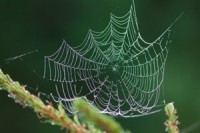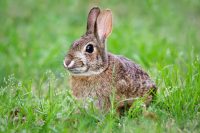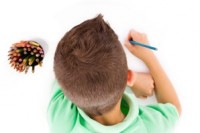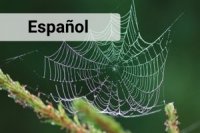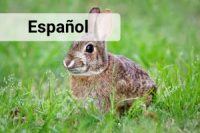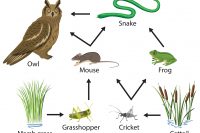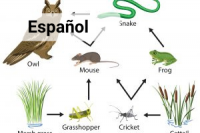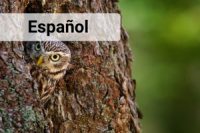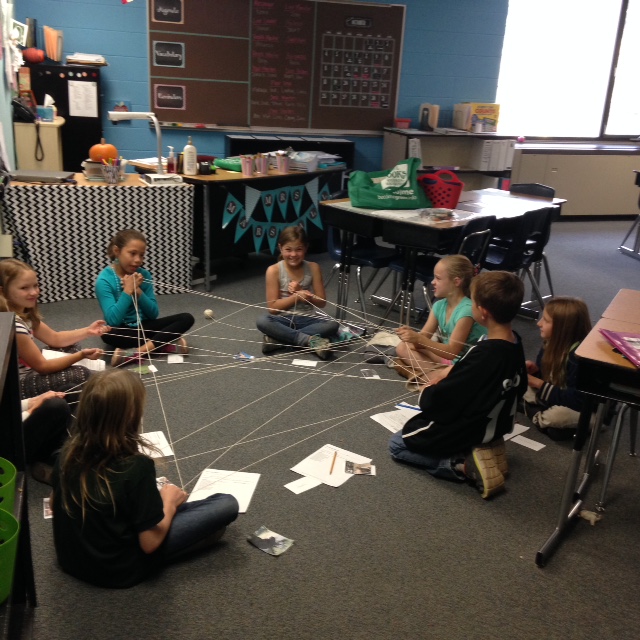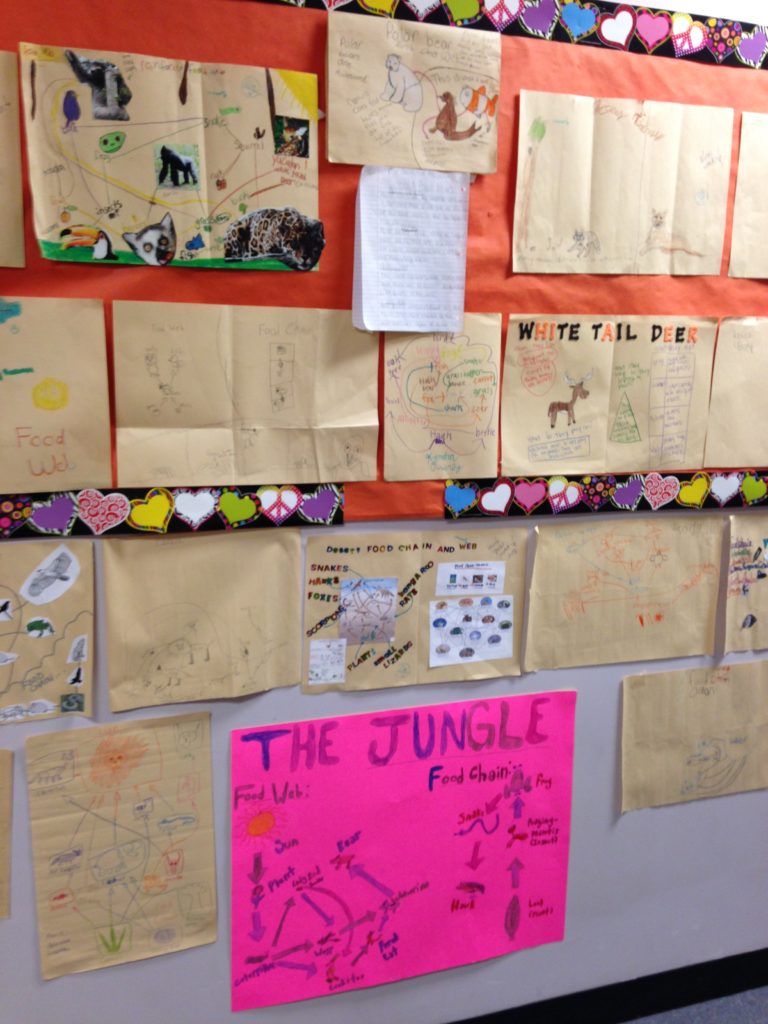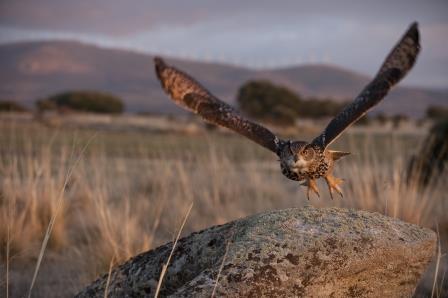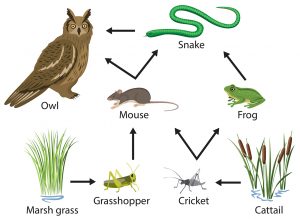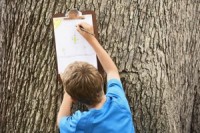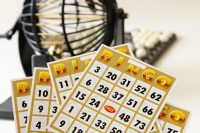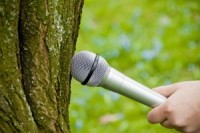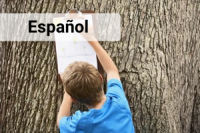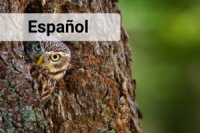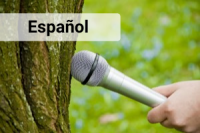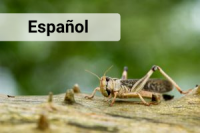Plants are crucial components of most ecosystems because they provide the energy that other organisms need to live. In this inquiry-based activity, students design investigations to explore what these “power plants” need to function and grow.
Note: You will need to prepare the seeds for this lesson approximately one to two weeks before you plan to conduct it with your students. Scroll to the Getting Ready section for more details.
Learner Objectives
- List at least three ways plants are important to people.
- Conduct an experiment on the basic needs of plants.
- Measure and graph the growth of plants, comparing a control group to an experimental group.
- Diagram the process of photosynthesis and briefly describe how matter is transported in and out of a plant during photosynthesis.
Materials
- Materials for demonstration: glass jar or bowl, water, large leaf, small pebble, lamp with 25-watt compact fluorescent bulb
- An assortment of leaves from the garden or neighborhood
- Magnifying lenses
- Copies of student pages (see Getting Ready)
- 50 seeds (bean, pea or alfalfa work well)
- Large jar in which to sprout seeds
- Paper towels
- 20 planting containers (small pots, cups, or egg cartons)
- Potting soil
- Masking tape and pens
- Additional materials for student-designed investigations (optional, see Getting Ready)
- Digital camera (optional)
- Science journals
- Plant Producers student page
- Index cards
- Colored pencils
Time Considerations
- Getting Ready: 30 minutes or more
- Doing the Activity: One 20-minute period to introduce the activity (Engage), one 50-minute period to set up the experiments (Steps 4-7 of Explore), 10–15 minutes once or twice a week for about a month to monitor the experiment (Steps 8-9 of Explore), and one 50-minute period to wrap up (Explain and Elaborate)
- Evaluate: 50 minutes
Getting Ready
- Set up the photosynthesis demonstration as follows:
- Fill a glass bowl or jar with water.
- Place a large, freshly picked leaf in the water. If necessary, weigh down the leaf with a small pebble so that it stays submerged.
- Place the jar or bowl under a bright lamp or in direct sunlight outside. Depending on the leaf and the available light, you should see bubbles forming on the leaf within 10 minutes to an hour. Check the underside as well. (The bubbles are oxygen given off by the plant as it undergoes photosynthesis.)
- As an alternative to the demonstration (in Engage), you may choose to show a video of an aquatic plant giving off oxygen, such as the Video Demo: Photosynthesis and Respiration with Cabomba Pondweed by Science and Plants for Schools.
- Decide whether students will design their own investigations (in Step 6 of Explore), or whether they will all follow the suggested model (in Step 7 of Explore). If they will be designing their own, make copies of the Planning Your Power Plants Investigation student page to guide their planning. If they will be following the model provided, make copies of the What Happens if Plants Don’t Get Sunlight, Water, or Soil? student page to guide the investigation. In either case, also make copies of the Measuring Plant Growth and Plant Producers student pages.
- Gather materials. For the seeds, you may use beans or other seeds sold in bulk at the grocery store. For the large leaf, collect one from a living plant immediately before doing the demonstration. Collect a few other leaves at the same time for students to observe up close. If students will be designing their own investigation, have additional materials on hand for them to test, such as different soils, different liquids for “watering,” and so on.
- Approximately 1–2 weeks prior to the activity, soak seeds overnight and then place them in a large jar on a layer of damp paper towels. Put the jar in a window and monitor daily, keeping the paper towels moist. Once seeds have formed leaves and roots they are ready for the investigation.
- Decide what material from the Background page to share with students. For example, you might present some of the information like the Photosynthesis teacher page diagram for the Explain part of Doing the Activity, or use the suggested Discussion Questions to support a casual conversation on the topic.
- See Additional Resources to find other supports for teaching this activity.
Key Vocabulary
You may use the Key Vocabulary: Power Plants student page to introduce students to the following vocabulary terms or to review or assess their mastery of these terms. Note that the definitions below are geared for students, while the definitions that “pop up” within the activity text online are geared for the teacher.
| Term | Definition |
|---|---|
| Aquatic | Living or growing in water. |
| Carbohydrates | Substances made up of carbon, hydrogen, and oxygen that are found in foods such as bread and cereal. |
| Carbon dioxide | A gas that is made up of carbon and oxygen. Animals exhale this gas, and plants use it to make food. |
| Chlorophyll | The green substance in plants that captures sunlight to make food out of water and carbon dioxide. |
| Ecosystem | A community of living things interacting with their environment. |
| Food energy | Energy that organisms get from food in order to live and grow. |
| Habitat | An area that provides an organism with enough food, water, shelter, and space to live. |
| Nutrient | A substance needed for health and growth. |
| Photosynthesis | The process by which green plants make food from sunlight, water, and carbon dioxide. |
| Reproduce | To produce offspring or young. |
| Stomata | Tiny openings on a leaf’s surface through which gases pass. |
PLT Conceptual Framework
- 3.1. In biological systems, energy flows and materials continually cycle in predictable and
measurable patterns. - 5.1. Organisms change throughout their lifetimes. Species of organisms change over long periods of time.
Standards
See Standards Connections in the Appendices for a list of standards addressed in this activity.
